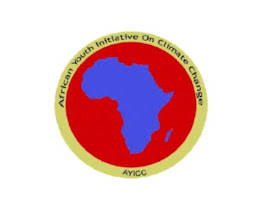Doha Briefs: Pulling off the Blinders
Ambition has
been the buzzword of late at COP18, and this is especially with regards to
finance and cutting down of Green House Gas emissions.
Ambition Lacks!
There has been a
constant outcry by least developing countries and Association of Small island
States (AOSIS) with regards to the lack of commitment by Annex I (developed
countries) to put money on the table to finance mitigation and adaptation
projects. Also, the lack
of ambition by Annex I countries to cut down on their Green House Gas emissions
has been manifested by the withdrawal of Canada, Japan and New Zealand from the
second commitment period of the Kyoto Protocol. Interestingly, this happened in
the backdrop of a report by the World Bank that warns that Annex I countries need to deeply cut down on
emissions by 25 – 40% by 2020 so as to avert the 4 degrees Celsius increase in
warming that is catastrophic.
The Gulf goes Green
The significance
of Qatar hosting COP18 cannot be understated. This has put the spotlight on the
Gulf region at large with regards to how it plans to go Green. According to ECO Newsletter, the following numbers put the issue into perspective:
·
Saudi Arabia has pledged to
have 7-10% renewable energy by 2020; 30% by 2030
·
United Arab Emirates has
pledged: Abu Dhabi to have 7% renewable energy and Dubai 5% renewable energy
·
Qatar: 10% renewable energy by
2030
·
Kuwait and Oman: 10% renewable
energy by 2020
·
Bahrain: 5% renewable energy by
2030
Gender Mainstreaming
Gender issues
also took centre stage, thanks to a proposal by the European Union to
mainstream women into the UNFCCC process. This is actually not the first time
that this issue has come up, as it was also discussed in COP7. With this
proposal, women will be mainstreamed into the UNFCCC process through
representation on the bodies of the framework.
Money and Accountability
The issue of
monitoring, review and verification (MRV) of climate finance was one of the hot
topics the last week here at COP18. This was with regards to how Annex I are
reporting about the money that goes into finance. Developing countries are
pressing Annex I countries to be clear and give a breakdown of the climate
finance they are providing, but this did not go well with the latter, as all
they want to do is to provide vague details of their climate finance
contributions; also, Annex I are of the excuse that transparent reporting on
climate finance is too cumbersome a process. Of specific interest is which
countries are receiving money from where, and the specific mitigation and
adaptation projects that are being funded. The tug of war is going on, and the
end of this week will determine the outcome.
Burning Issue: Fossil Fuel Subsidies
The issue of ending fossil fuel subsidies
has been simmering under the surface since the start of Cop18, and the civil
society has been pressing for the mention of fossil fuel subsidies. Luckily,
there was a breakthrough when this issue was mentioned at the COP. To put this
issue into perspective, how about some numbers from International Energy Agency
·
Around $730bn annually goes to
fossil fuel subsidies
·
2011 saw $88bn go to renewable
energy subsidies
There were some
calls that some of the money used for subsidizing fossil fuels should go to the
Green Climate Fund (GCF). Well, time will tell..
Africa and the Convention Kitty
Well..!! The
African Convention Fund essentially is aimed at facilitating Africa’s efforts
towards combating climate change. It follows that Africa needs to be able to
tap into adequate financial resources to boost her capability to combat climate
change. The continent has experienced tremendous growth over the last couple of
years with the general economic topography looking generally positive. However,
the cost of climate change has threatened to push back the gains that have been
painstakingly achieved. The average growth rate has been 5% meaning that the
economic space in the continent has been expanding, creating more opportunities
and prospects in Africa. Climate change however threatens up to 3% of the
continent’s GDP hence the need to tap into more financial resources to offset
the damage[1].
The need for
resources has also stemmed from the fact that only about 5% of the total amount
pledged has been delivered. The result is well known, HUGE DEFICIT; In addition
up to about 95% of the funds available have been used for mitigation mechanisms[2].
This creates a short fall in terms of adaptation programs which are crucial in
equipping Africans to cope with the adverse effects of climate change.
In accessing and
efficiently utilizing these resources, Africa has to place itself in a position
that ensures its best interests are secured. Reforms need to be enhanced with
regard to institutions that are mandated to tackle climate change. In doing so,
Africa would be laying the ground for more access to these resources and make
submissions regarding the improvement of the Green Climate Fund. In addition,
finding the “soft spot” of the private sector is key since they are key
stakeholders as regards providing funding used to tackle climate change. Key to
all this is however reforms at all levels and all key sectors.
Conclusion
So, this week
the ball is in the politicians’ court, and the issues that remained unresolved
last week - by technocrats - will now be handled by politicians. And the wait
for a breakthrough continues….

Comments
Post a Comment